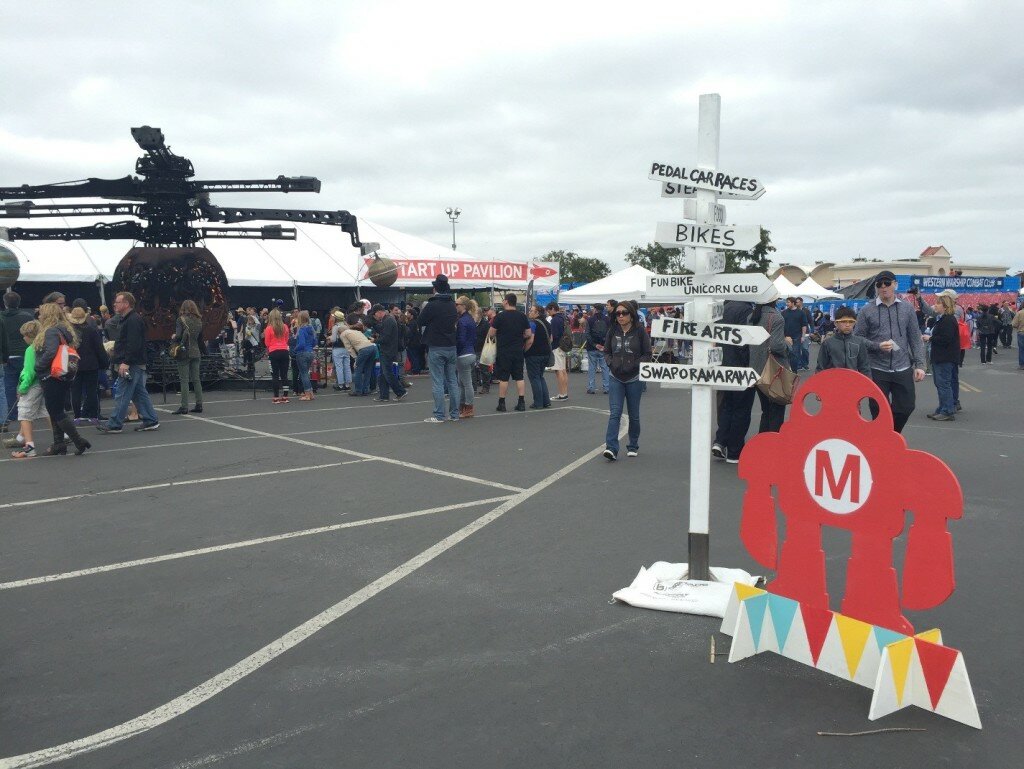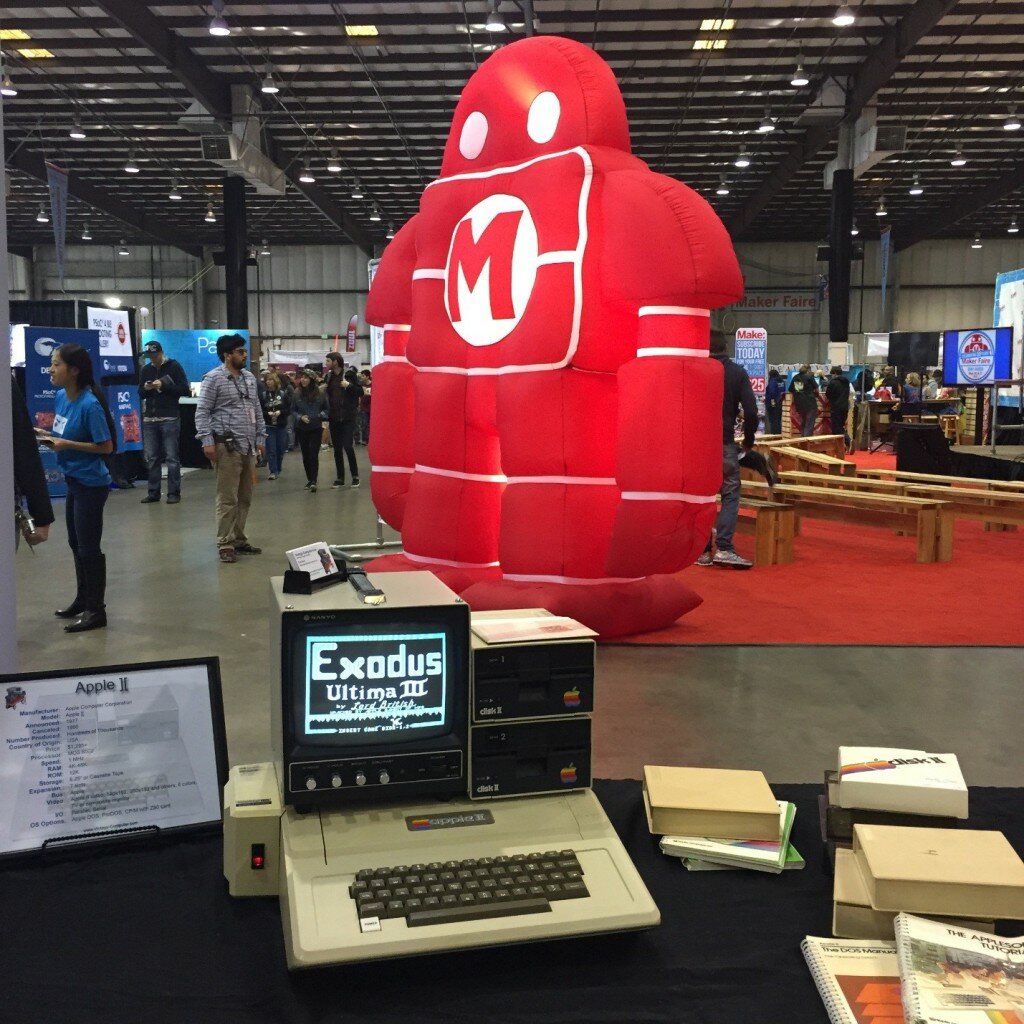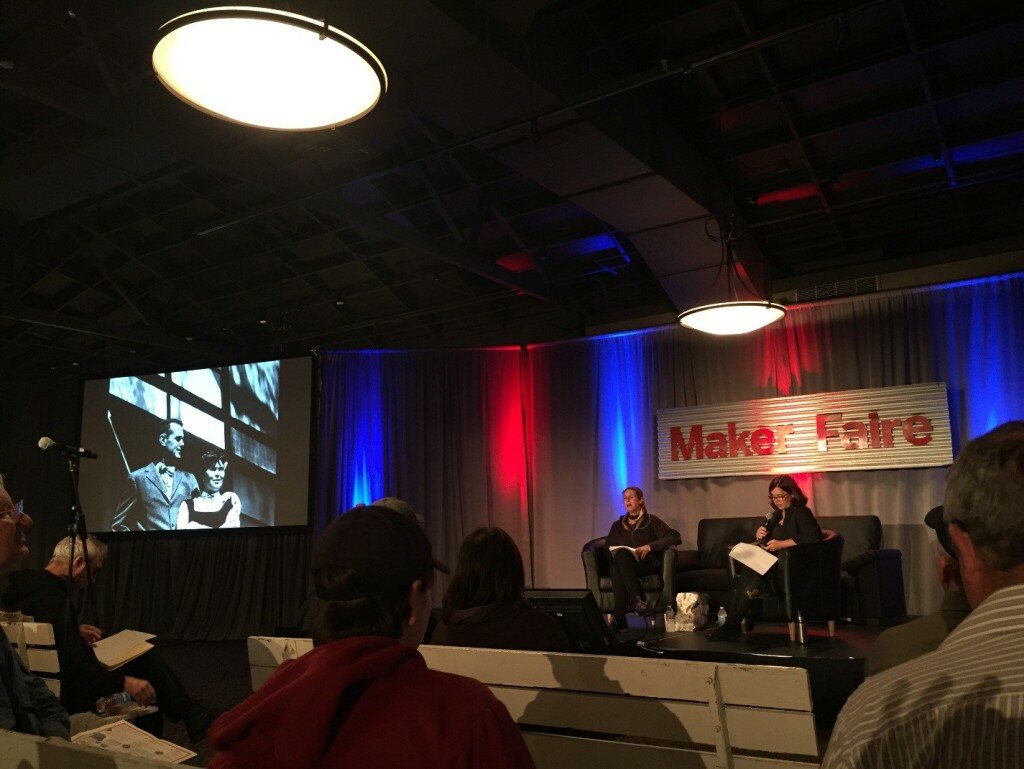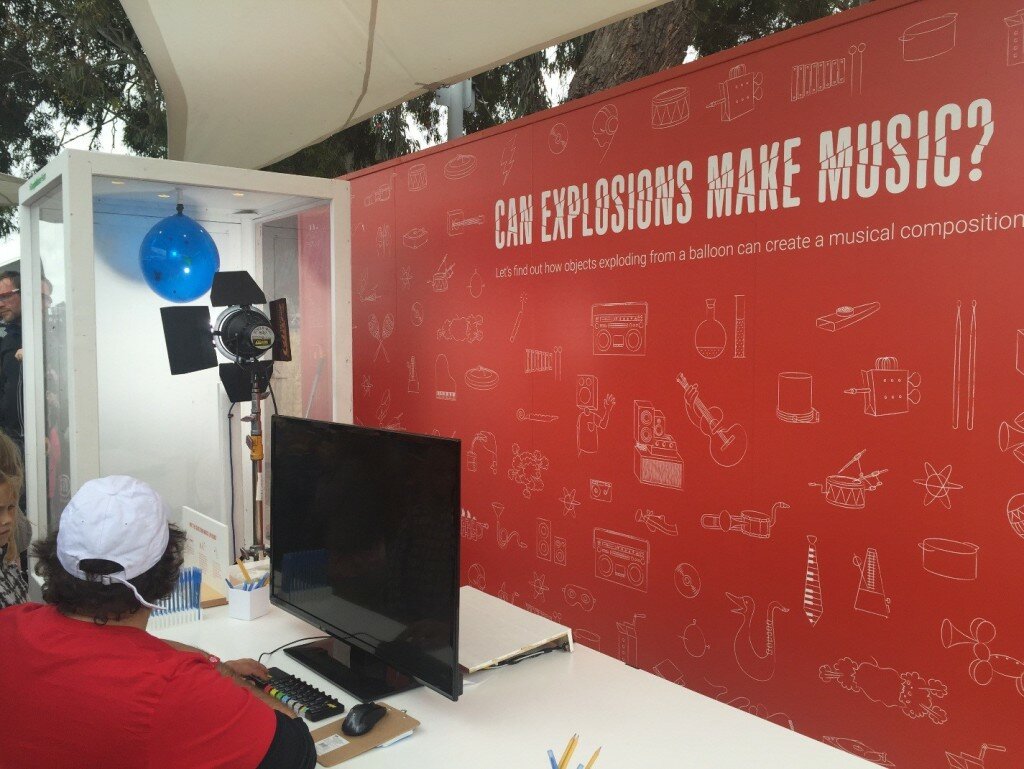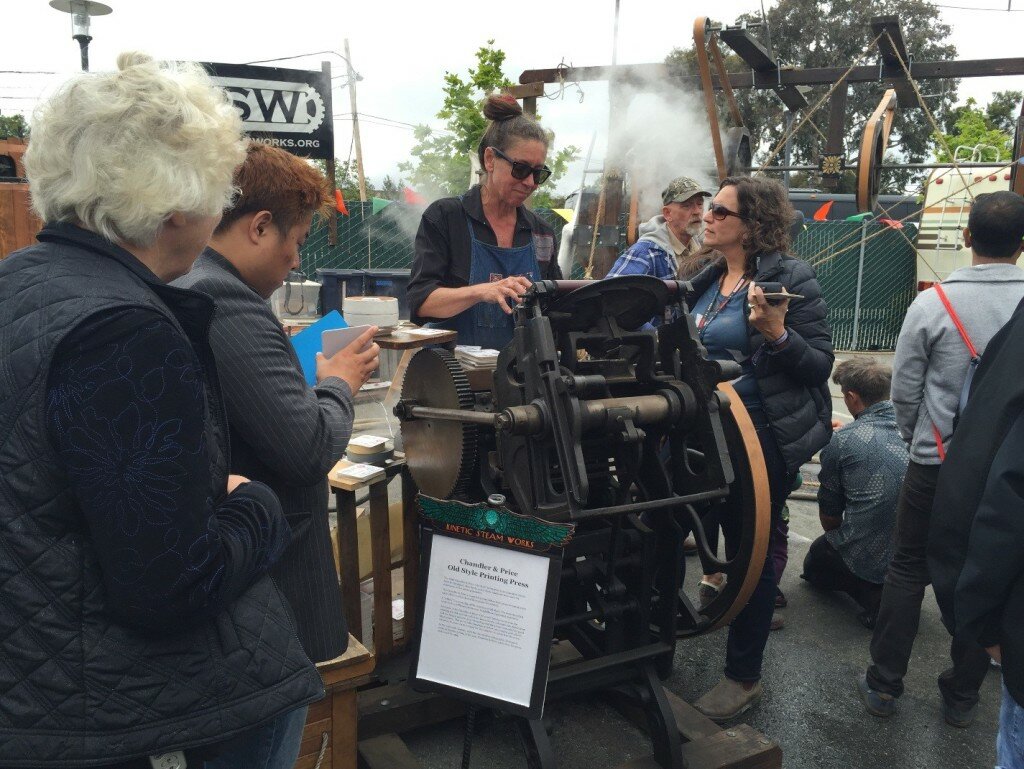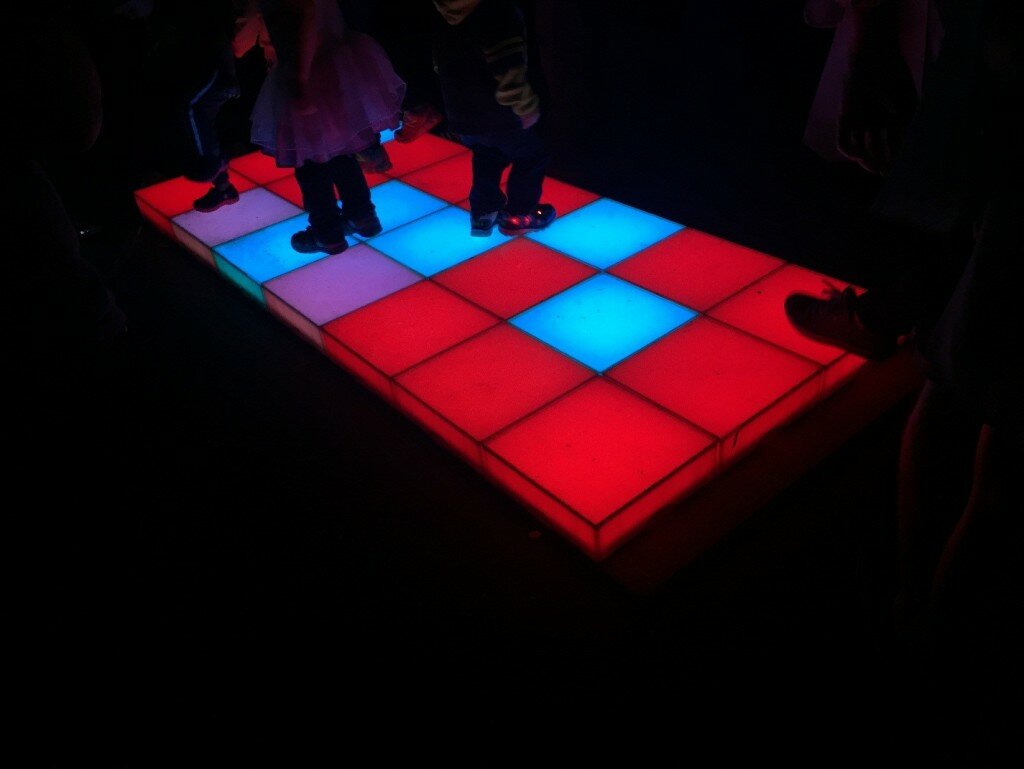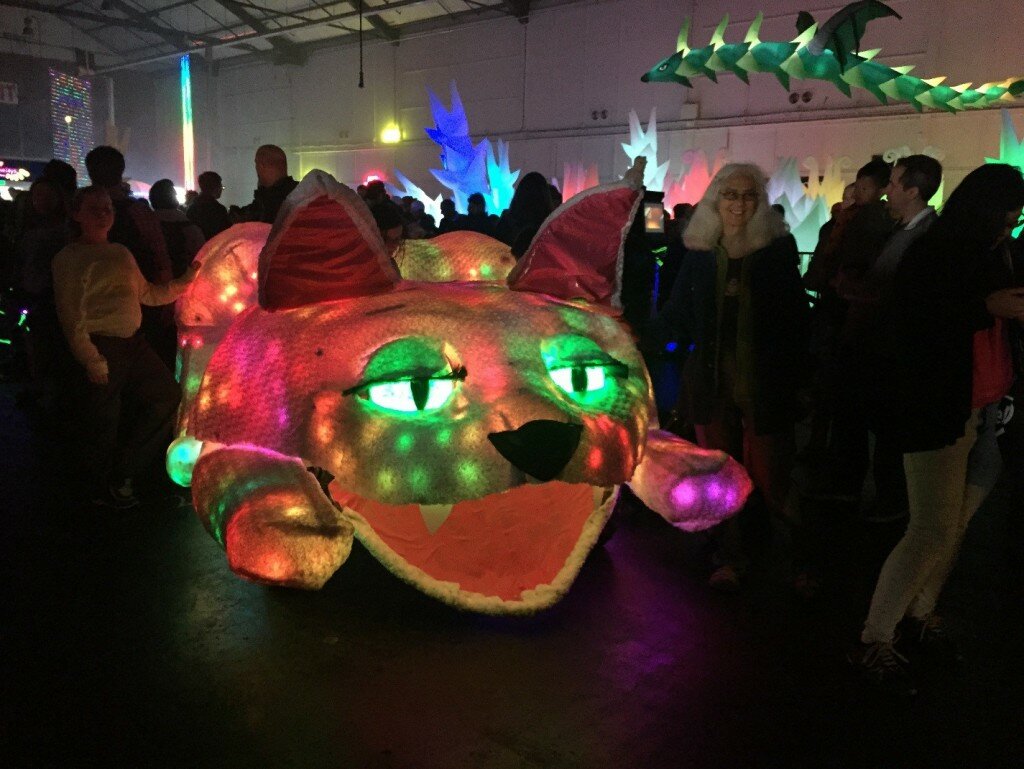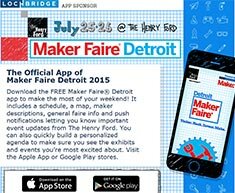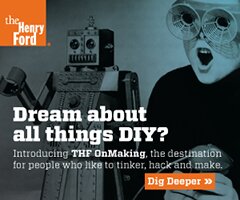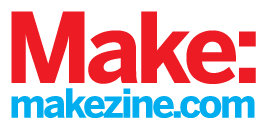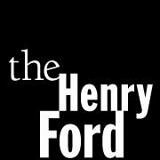The weekend of May 15-17, 2015 marked the 10th anniversary of Maker Faire Bay Area, a flagship festival of the Make movement. I was lucky to have the opportunity to attend the Faire in order to speak about The Henry Ford’s recent acquisition of the Apple 1 computer. On Saturday morning, as I climbed the Make:Live Stage to present images and stories gathered from the auction, its arrival to the museum, and video of the computer operating—I was happy (okay, I’ll admit, even a little nervous)—to see a crowd of over 100 enthusiastic people gathered. The appeal of the Apple 1 and the museum’s excitement about its acquisition was well-understood by the extremely attentive audience.
After the presentation, I had time to take in a little of the festival, and am happy to report that the Maker movement is alive and very well in the world. Here are a few of my favorite moments from the weekend:
Dwight Elvey of the long-running virtual museum and forum, vintage-computer.com displayed a portion of his operational computer collection including an operational Apple II, Commodore 128, and Amiga 2000. These systems were crowd-pleasers, fully functional and loaded with games for Maker Faire attendees to use. On display were also two lesser-known systems: a prototype and production model Swyft computer and a Canon Cat. These computers were the work of Jef Raskin, the person who initiated the Apple Macintosh program in 1979.
The Center Stage played host to several interesting lectures over the course of the weekend as well. Jennifer George—the granddaughter of cartoonist Rube Goldberg—framed her grandfather’s creative legacy as a point of inspiration for the Maker movement. George shared her childhood memories, Goldberg illustrations, and videos from people like Joseph Herscher, a kinetic artist who makes contraptions inspired by Goldberg’s cartoons. Also sharing center stage was Llisa Demetrios (grandchild of Charles and Ray Eames) and Karen Wilkinson (Exploratorium). The pair conversed on the topic of the “learning-by-doing” philosophy that absolutely permeates the output of Charles and Ray—values that Demetrios called out as influences upon her mother Lucia’s sculpting career, as well as her own. From architecture to furniture design, collecting to exhibit design, the Eames Office was certainly host to many proto-Makers.
In Google’s “Breaker Lab,” two interesting questions were posed: “Can explosions make music?” and “What happens if I smash it?” In the first demonstration, a balloon filled with paper tape was filled to its breaking point in a sound-proof booth. When the balloon broke, the resulting sound waves were slowed down and filtered through a computer program by an engineer to allow the audience to hear the ambient tones produced. In the second demonstration, a hydraulic device powered by the displaced energy of the stomping feet of children revved up to smash common objects under the eye of a high-speed camera. While at first glance it may seem frivolous to witness the smashing of a VHS tape or Rubix Cube, the science behind the lessons in the Breaker Lab are similar to the types of problems analyzed by Google’s failure analysis and testing engineers.
The Bay Area non-profit group, Kinetic Steam Works, brings defunct steam engines back to life, pairing them with kinetic things like printing presses, traction engines, and player pianos. The organization aims to educate modern audiences about the potential of steam power, and to see the machinery of the past activated.
The Dark Room was a welcome respite from the outdoor crowds, and allowed for a meditative wander past exhibits that largely relied on the use of LED lighting. There were many fantastical moments that speak for themselves via the images above: an Illuminated Forest, a touch-active dance floor, and a larger than life car in the shape of a cat, with motorized eyes and mouth.
Over the last decade, there has been somewhat of an explosion, worldwide, in the level of attention being paid to people who identify themselves as being Makers. But really, Makers have always been with us. At heart, they are simply the people who question the design of things, from the everyday to the high-tech. They are the type of people who shift from being consumers of things to become producers of things. These are the bones of good Makers, inventors—and innovators. And it was refreshing to see such an incredible community come together for a weekend to show off their creative and singular projects.
On July 25-26, 2015, The Henry Ford will enter its 6th year as a featured Maker Faire host, and the Call to Makers will be accepting applications until June 8th. Whether you are a Maker or a visitor, the communal sense of chaos, inspired collisions, and lively connections between Makers and the museum’s campus is a wonderful experience to be a part of. We hope to see you there!
Kristen Gallerneaux is Curator of Communication & Information Technology at The Henry Ford.

